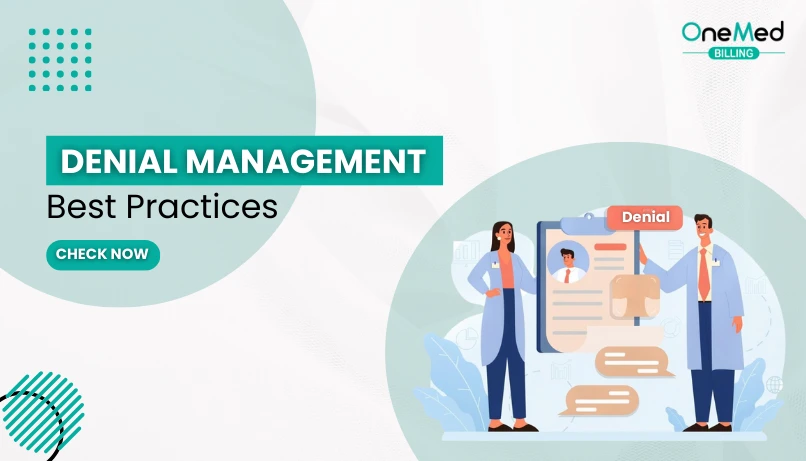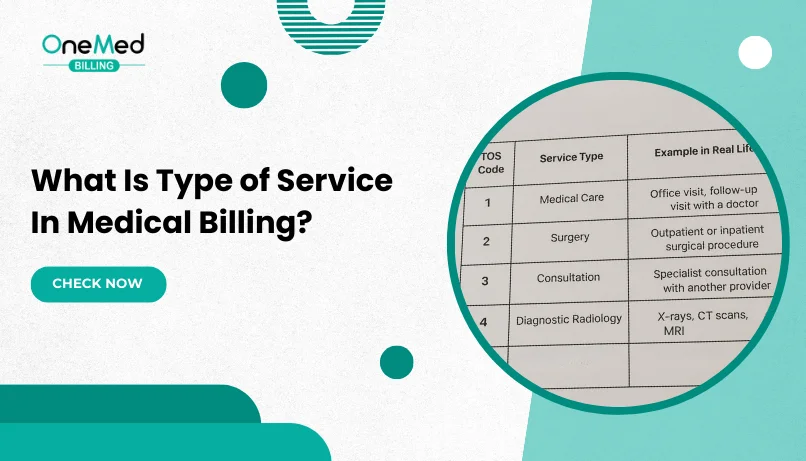10 Denial Management Best Practices to follow in 2025
- July 30, 2025
- 0 Comments
- Denial Management
What Is Denial Management?
Denial management is the process of identifying, correcting, and preventing insurance claim denials. In simple terms, it’s how your team makes sure you get paid for the care you’ve already provided.
When a claim gets denied, the denial management process kicks in, your staff figures out what went wrong, fixes the issue, and either resubmits the claim or files an appeal. But the real power of denial management comes from looking at patterns. Instead of just reacting to one denial at a time, a strong denial management process helps you find the root causes and fix them for good.
It’s not just about recovering lost revenue. It’s about building a smarter system that keeps your billing clean, reduces staff stress, and helps your practice stay financially healthy.
Denial Management Best Practices
In any medical practice, claim denials can quietly drain revenue if not managed properly. They delay payments, pile up extra work for staff, and, in some cases, cause permanent financial loss. But with the right system and habits in place, most denials can be prevented or fixed without much stress. If your team has ever wondered how to handle denials, the answer starts with a structured, proactive approach. Let’s take a close look at the best practices that experienced billing teams use every day to stay ahead of denials and keep the revenue cycle running smoothly.
1. Make denial reviews part of your daily routine.
One of the most important habits for any billing team is to check for denials every single day. Many practices wait until the end of the week to go over rejected claims, but that delay can cost you. Insurance companies often have short windows for corrections or appeals, sometimes as little as 15 to 30 days. If you miss that window, the money could be lost for good. A real-life example comes from a small orthopedic clinic that lost a $1,500 claim simply because no one saw the denial until it was too late. After that, they made daily denial reviews a standard part of their workflow. Even just 15 minutes a day can prevent thousands in lost payments each month.
2. Always investigate the real cause behind a denial.

When a claim is denied, the payer will include a brief reason code, but that’s rarely the whole story. To truly fix the issue, you have to ask why it happened in the first place. Was it a data entry mistake? Was something missing from the clinical notes? Did the front desk skip a step during check-in? For example, a family medicine clinic kept receiving “authorization not on file” denials. It turned out the front desk wasn’t aware that in-office procedures like injections required prior auth with one specific payer. Once the process was corrected and a checklist was added, those denials stopped completely. The key is to treat denials as learning opportunities, not just paperwork.
3. Group denials into categories to find patterns.
A pile of denials may look random at first, but once you group them by type, trends start to appear. Sorting denials by categories like eligibility, coding error, or missing documentation helps you see where your workflow needs attention. One multispecialty clinic noticed that over a dozen of their physical therapy claims were denied in the same month for “invalid modifier.” After investigating, they realized they had missed an annual coding update and were using an outdated modifier that Medicare no longer accepted. Once their system templates were fixed, that entire category of denials disappeared. Keeping track of denial types makes it easier to spot what's broken and fix it fast.
4. Use a shared denial log to track status and resolution.

Without a proper tracking system, it’s easy for denied claims to be forgotten, duplicated, or handled twice by different people. A denial log can be as simple as a spreadsheet, but it should include key information like patient name, payer, date of denial, reason, actions taken, and whether the issue has been resolved. At a cardiology practice with multiple billers, the same claim was denied, appealed, and mistakenly re-appealed with the exact same documents — wasting nearly three weeks. After implementing a shared denial log, they could see the full claim history at a glance, which improved both teamwork and turnaround time.
5. Respond to denials within 5 to 7 business days.
Speed matters when dealing with denied claims. The longer you wait, the more likely it is that deadlines will be missed, notes will be harder to find, or staff will forget what went wrong. One pain management group learned this the hard way when their single biller only followed up on denials once a week. By the time appeals were filed, half were already past the deadline. After hiring a part-time assistant to handle denials daily, they cut their resolution time in half and significantly increased their payment recovery. Make it a standard rule in your practice that all denials should be fixed or appealed within 5 business days.
6. Create appeal letter templates to speed up the process.
Writing appeal letters from scratch each time takes too long and leads to inconsistency. Instead, create templates for the most common denial reasons, such as “authorization not obtained,” “not medically necessary,” or “invalid code used.” These templates should include sections for provider details, a clear explanation, and a place to attach relevant documents like chart notes or referrals. One urgent care center had trouble with claims for flu testing being denied as “experimental.” Their biller created a strong appeal template with CDC guidelines and sample documentation, which helped overturn almost all future denials of that type. Having templates ready saves time and boosts your success rate.
7. Track which appeals get approved and which ones fail.

Appeals are not a guessing game. By keeping track of appeal outcomes, you can start to understand which payers respond well, what language works, and what documentation is most effective. At a dermatology office, appeals kept getting rejected by one insurer until they noticed that only appeals with a provider-signed letter were being approved. After updating all appeal templates to include the provider’s signature and a short summary, their approval rate jumped from 11% to 74%. The key is to learn from experience and make data-driven adjustments.
8. Train your team regularly on how to prevent common denials.
Most denials don’t come from technical glitches. They come from small human mistakes like missing insurance updates, choosing the wrong code, or forgetting to request prior authorization. That’s why regular training is important. Hold short monthly sessions where your team reviews real denials that happened in your practice. Use these examples to show what went wrong and how to prevent it. For instance, a pediatric clinic had repeated eligibility errors on weekend visits. It turned out the front desk wasn’t trained to verify weekend coverage for Medicaid plans. After one 20-minute training, weekend denials dropped by nearly half.
9. Use billing software alerts to prevent denials before submission.

Many denials can be avoided altogether if your system flags issues early. Modern billing software can alert you when a claim is missing key information, contains a wrong modifier, or is submitted more than once. At an ENT clinic, the billing team set up an alert to flag any claim submitted without a referring provider listed. That small rule stopped 17 denials in the first month alone. Talk to your software vendor about which alerts are available and how to customize them based on your top denial types.
10. Set monthly goals to improve your denial rate.
It’s hard to get better at denial management if you’re not tracking your results. Set small, clear goals that your team can aim for each month. This could be something like “reduce eligibility denials by 10%,” “respond to all denials within 3 days,” or “win 80% of submitted appeals.” A small internal medicine group set a goal to reduce their denial rate by 5% each quarter. In six months, they went from a 12% denial rate to just under 6% without hiring any extra staff. Tracking goals motivates your team and gives you real data to show progress.
Conclusion
Denials are frustrating, but they don’t have to be damaging. With the right systems, tracking tools, and communication in place, many can be prevented before they happen and resolved more quickly when they do. For many practices, outsourcing denial management services is a smart move. It brings in specialized support to identify issues, manage appeals efficiently, and improve recovery rates without overloading your in-house team. These best practices aren’t about working harder, they’re about working smarter. Start by applying two or three of these tips right away, then build your process over time. Your revenue will thank you, and so will your team.
Frequently Asked Questions
Find quick answers to common questions about this topic, explained simply and clearly.
What tools help track and manage denials effectively?
Denial management software, claim scrubbers, and integrated billing platforms help identify patterns, track denial reasons, and automate follow-ups. Dashboards and reporting tools allow teams to monitor trends and take action quickly.
What role does staff training play in denial prevention?
Well-trained staff are critical to reducing errors that cause denials. Training ensures accurate coding, proper documentation, and understanding of payor rules—all of which help prevent avoidable claim issues.
How can automation improve denial management workflows?
Automation speeds up claim reviews, flags common errors, and routes denials to the right staff for resolution. It reduces manual work and helps practices respond to denials faster and more accurately.
What are best practices for reducing claim denials?
Verify insurance before every visit, use accurate coding, stay updated on payor rules, review denial reports regularly, and provide continuous staff training. Proactive communication with payors also helps catch issues early.







Comments (0)